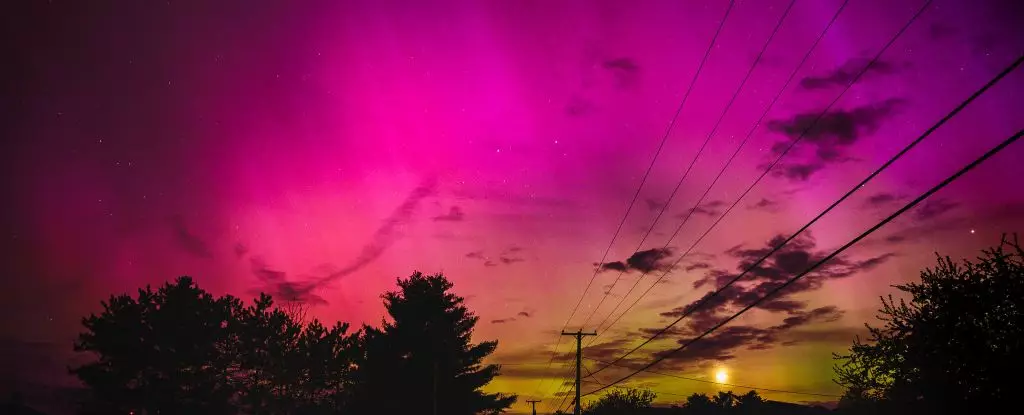In recent nights, Earth has been illuminated by mesmerizing green and red lights painting the skies, thanks to the impact of solar storms. These solar storms are the result of massive outflows of material exploding from the Sun and colliding with our planet’s magnetic field. While solar storms are not uncommon, the current series stands out due to their exceptional power, reminiscent of the Great Halloween Solar Storms of 2003. Despite the potential risks associated with such events, Earth has managed to remain mostly unscathed so far, showcasing astonishing auroras that extend to latitudes rarely treated to such dazzling displays.
The recent solar storms have given rise to two G5-level geomagnetic storms, classified as “extreme” and considered the most potent type of solar disturbances that Earth can experience. The magnitude of these storms is such that they can pose significant dangers to our planet. Past occurrences, such as the Great Halloween Storms, resulted in power grid fluctuations across North America, a power outage in Sweden, and the destruction of power station transformers in South Africa. While the ongoing solar storms have not yet caused any substantial damage, reports of power grid irregularities have been noted. As the intensity of the storms subsides, so does the immediate threat of harm, yet the possibility of additional solar storms looms on the horizon.
The primary culprit behind the current solar storms is a sunspot region known as AR 3664, currently traversing the surface of the Sun. This vast region is visible to the naked eye and is highly active, emitting multiple X-class flares, the most powerful type of flares produced by the Sun. While flares alone have an impact on Earth, the true havoc is wreaked by coronal mass ejections (CME) that frequently accompany flares, emanating from sunspot regions where reconnections in the solar magnetic field generate massive energy bursts. CMEs consist of enormous amounts of plasma and magnetic fields ejected from the Sun into the Solar System, weighing in the billions of tons. These awe-inspiring phenomena hold the potential for significant disruption when they interact with Earth’s magnetic field.
When a CME collides with Earth’s magnetic field, it triggers a series of reactions that culminate in various effects, including the mesmerizing auroras that light up the sky. While the typical green hue of auroras is a result of solar particle interaction with oxygen at altitudes ranging from 100 to 300 kilometers, the vibrant red auroras we have been witnessing are generated by interactions at higher altitudes between 300 and 400 kilometers. These red auroras, which need to be substantially brighter than green ones to be visible to the naked eye, present a breathtaking spectacle for observers. Despite the aesthetic appeal of auroras, solar storms can also induce power grid anomalies, generating currents within the atmosphere that cause surges in power systems, potentially leading to damage.
As sunspot region AR 3664 nears the edge of the solar disk, there is still the possibility of continued solar activity from this volatile region. Even though the latest X-class flare is no longer directed towards Earth, the potential for additional CMEs to contribute to ongoing solar storms remains. The NOAA has issued projections of moderate geomagnetic storms until the early hours of 13 May. With the Sun reaching the peak of its 11-year activity cycle, it is probable that more sunspot regions will emerge, offering opportunities for further captivating displays of solar phenomena. Individuals interested in witnessing auroras can monitor forecasts on the NOAA’s Space Weather Prediction Center website for the northern hemisphere and the Australian Bureau of Meteorology’s Space Weather Forecasting Centre for the southern hemisphere. Don’t miss the chance to experience this extraordinary natural light show firsthand.


Leave a Reply